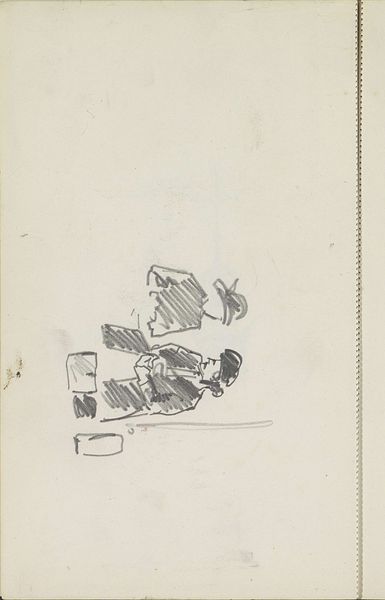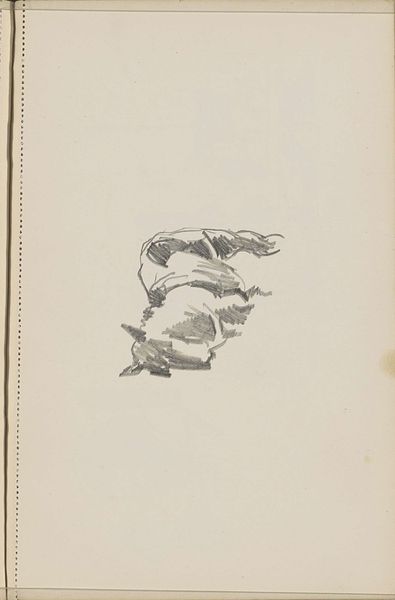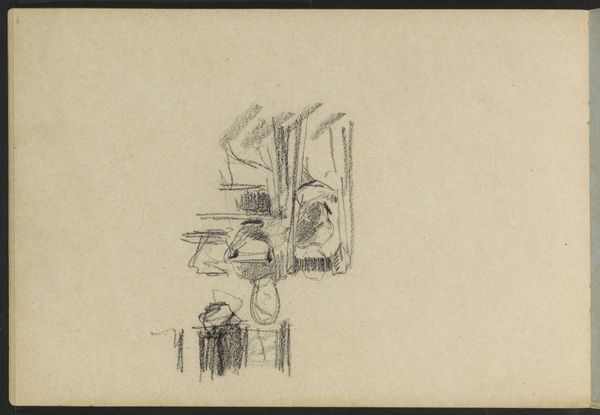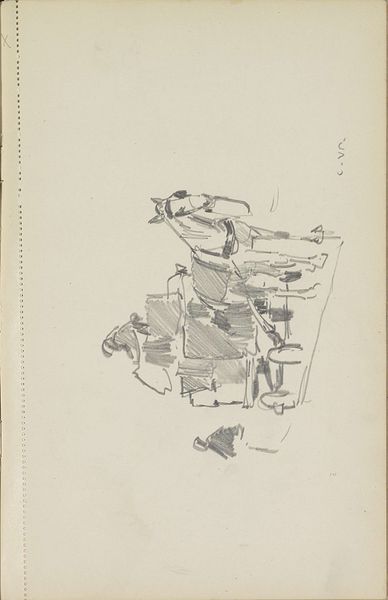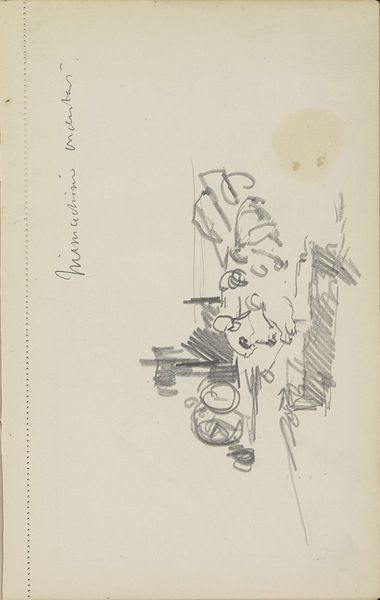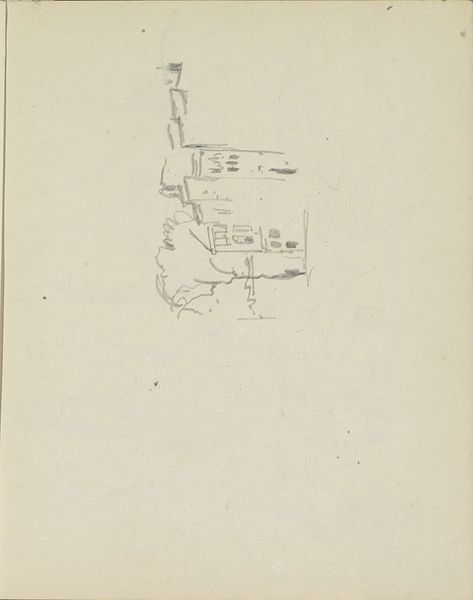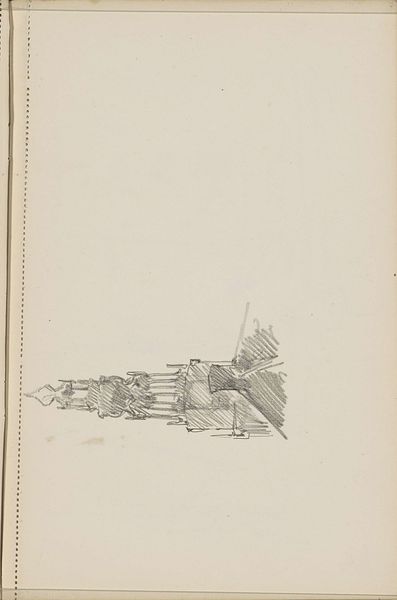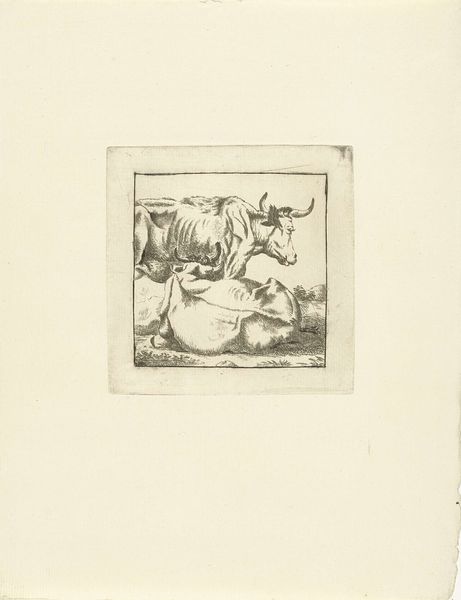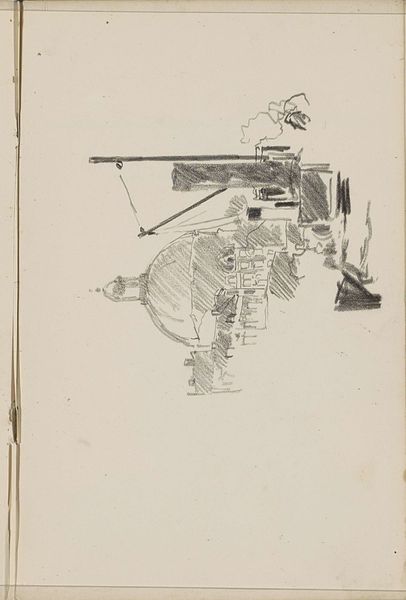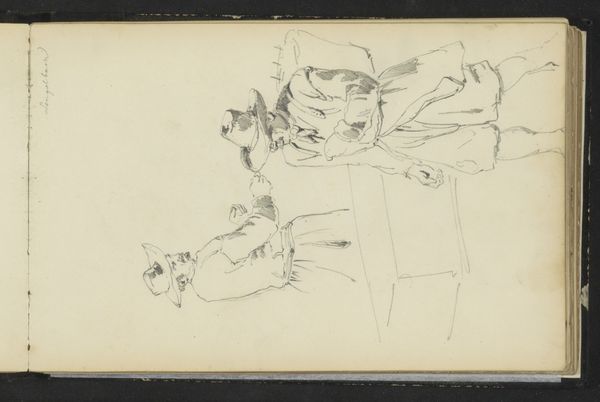
drawing, pencil
#
drawing
#
landscape
#
pencil
#
realism
Copyright: Rijks Museum: Open Domain
Curator: This drawing, titled "Paard en wagen," which translates to "Horse and Cart," is attributed to Cornelis Vreedenburgh and was likely created sometime between 1890 and 1946. It’s currently held in the Rijksmuseum collection. Editor: My first thought is how stark and skeletal it is, yet with a sense of robust work suggested through just a few confident lines. The material simplicity of pencil on paper focuses my attention on the horse as a beast of burden, literally and figuratively. Curator: That's a compelling reading. Consider how the horse and cart traditionally represent labor and transport. This image strips those things down to their essence. The skeletal representation, as you put it, might signify the hardiness of the working class within a Dutch landscape. We often romanticize these figures but, drawings like this hint at realities of grueling work and survival. Editor: And beyond survival, let’s think of what is being consumed by the urban dweller. The drawing lacks any background to frame a social narrative—instead, the raw materials become the narrative, forcing me to consider the entire support system required in a horse drawn economy. Where are the horses bred? Who owns this particular team? How is the feed secured? Curator: I appreciate you focusing on production. Zooming in further, the repeated shapes making up the cart might symbolize cyclical repetition within agrarian or pre-industrial societies. I think that's why the marks appear not so refined but deliberately simplistic. This resonates deeply within cultural memory regarding these ways of life—their benefits, along with burdens they impose. Editor: I also wonder if we’re reading too much into the sketch’s lack of polish. The use of pencil as medium inherently allows more opportunity for a rapid capturing, maybe only a snapshot. Is the incomplete appearance only an artifact of the technique? Maybe Vreedenburgh chose not to make an enduring artwork but simply a practical, economical study, without high-minded concept or theme. Curator: It’s difficult to fully know intent, but every image holds symbolic value depending on time and context. Whether or not the artist understood them at the moment doesn’t nullify meaning in their representation over time. Editor: Indeed. And ultimately, in appreciating this “Horse and Cart”, the bare essence in the drawing process and historical period help connect the artwork to a greater sense of economic and even emotional utility.
Comments
No comments
Be the first to comment and join the conversation on the ultimate creative platform.

